#1760s shoes
Explore tagged Tumblr posts
Text
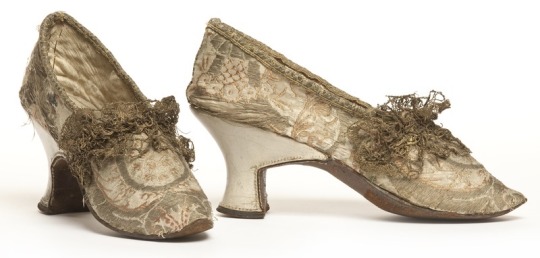
Beige Silk Shoes, 1750-1770, French.
Musée des Arts Décoratifs Paris.
#beige#silk#shoes#1750s shoes#1750s#1760s#1760s shoes#1750s france#1760s france#reign: louis xv#France#French#mad paris#musée des arts décoratifs paris#1750s extant garment#1760s extant garment
39 notes
·
View notes
Text

Pair of Shoes
1760s
unknown maker, England
Brocaded silk, silk ribbon, satin, lined with leather
Victoria and Albert Museum
#1760s#18th century#18th century fashion#footwear#shoes#fashion history#historical fashion#history of fashion#frostedmagnolias
177 notes
·
View notes
Text

Pair of Leather Boots, English, 1750-99
From the Victoria & Albert Museum
#boots#shoes#fashion#fashion history#history#english#1750#1799#1750s#1760s#1770s#1780s#1790s#1700s#18th century#georgian
33 notes
·
View notes
Photo

Shoe
1760-1780
United Kingdom
The MET (Accession Number: 2009.300.4132)
#shoes#fashion history#historical fashion#1760s#1770s#1780s#georgian#rococo era#yellow#red#silk#united kingdom#fashion accessories#accessories#18th century#the met
305 notes
·
View notes
Text
In the Gazetteer and New Daily Advertiser on 25 March 1765:
RUN away from her Master last Friday evening, a Negroe Woman, named Joan, about 18 Years old, speaks nothing but English; had on when she went away, a brown Stuff Gown, red Cloak and black Leather Shoes; has very thick Lips, about five Feet five Inches high. Whoever won give Notice where she may be found, or bring her to Capt. John Grant, at Mr. Stewart's, Finch Lane, shall receive Two Guineas Reward, and no greater will be given, as proper persons are employed to find her.
N.B. Any Person who conceals her, will be prosecuted.
"Normal Women: 900 Years of Making History" - Philippa Gregory
#book quotes#normal women#philippa gregory#nonfiction#gazetteer and new daily advertiser#march 25#60s#1760s#18th century#run away#slavery#slave trade#friday night#black woman#joan#brown dress#red cloak#black leather shoes#fit check#captain john grant#finch lane#reward offered#prosecution
0 notes
Text


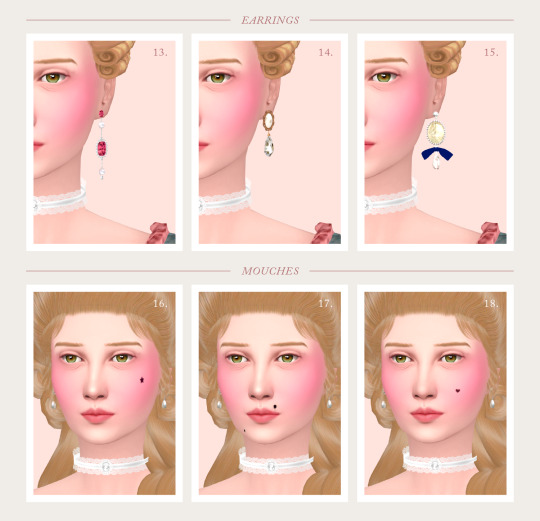


1700s WOMEN - PART 2
Lace as a luxury was carried over from the 17th century, used as a status simple for the wealthy to flaunt. From the mid-century on it migrated to the neck in the form of delicate chokers, which were a fashionable alternative to traditional jewelled necklaces. As hairstyles became larger hat styles became smaller until they were discarded altogether for a time, followed by extremely large hats that accommodated the curls, plaits and frizzed hair beneath. CC links and reference images under the cut.
You can find more of my historical content here:
1300s ✺ 1400s ✺ 1500s ✺ 1600s ✺ 1700s
1 - Hedgehog Hair & Silk Headband by Acanthus Sims
2 - Eleonora Hair by Melancholy Maiden
3 - Sophia 1790s Hair by In Love with the Regency Era
4 - Rococo Hair & Feather and Pearls Accessory by The Regal Sim (Curseforge)
5 - 1770s Four Curls Tall Coiffure & Rose Crown by Acanthus Sims
6 - 1700s Hair 1 by In Love with the Regency Era
7 - Hedgehog Hair & Bergère Hat by Acanthus Sims
8 - Tête de Mouton & Suburban Shopper Hat by Javi Trulove
9 - Hedgehog Hair & Bow Hat by Acanthus Sims
10 - Small Louis XV Hair (A) by Acanthus Sims | Reminiscence Of Flower Hat by Simsonico
11 - Duchess of Devonshire by Historical Simslife | Cavalier Hat V.2 by Strange Storyteller Sims
12 - Small Louis XV Hair (B) by Acanthus Sims | Ruffle Hat by Acanthus Sims
13 - Diamond Pink Earring v2 by Glitterberry Sims (TSR)
14 - Arthur 1 Earring by Yakfarm
15 - Velvet and Pearl Earrings VER.1 by LIN_DIAN (TSR)
16 - Voiles Face Stars by Kismet Sims
17 - A la Quigley’s Mouches by Javi Trulove
18 - Clara Beauty Marks by The Plumbob Fairy (retired - direct download)
19 - Lace Collar 05 by S-Club (TSR)
20 - Lace Collar with Bell by MysteriousOo (TSR)
21 - Pearl Necklace 201915 by S-Club (TSR)
22 - Genius Eden Choker by Genius666 (TSR)
23 - Frill Choker by Euno Sims
24 - Midnight Choker by Pralinesims (TSR)
25 - Ledé Gloves by Vibrant Pixels
26 - Candy Witch Lisa Gloves by Simsonico
27 - Reminiscence Of Flower Gloves by Simsonico
28 - 1760s Rococo Mules by Simulated Styles
29 - Reminiscence Of Flower Shoes by Simsonico
30 - The Regal Sims Rococo Shoe Recolour by Elfdor
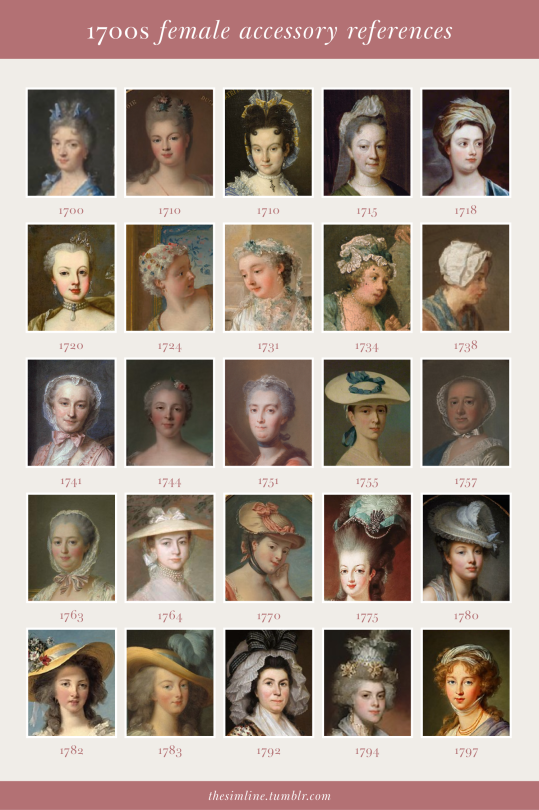
With thanks to some amazing creators: @acanthus-sims @the-melancholy-maiden @inlovewithregencyera @javitrulovesims @simsonico @strangestorytellersims @glitterberrysims @pralinesims @vibrantpixels @simulatedstyles @elfdor
#ts4#ts4 cc cas#the sims 4#ts4 decades challenge#sims 4 decades challenge#s4 cas#ts4 historical#ts4 history challenge#sims 4 history challenge#sims 4 historical#1700s#georgian#rococo#historical cc#cc finds#ultimate decades challenge#18th century#georgian fashion#georgian era
774 notes
·
View notes
Text
Fashion in the Turning (터닝) manhwa
Welcome to my desperate attempts to put Pruelle in a dress to figure out which period the fashion in Turning (manhwa) fits best.
Disclaimer that I am not at all a fashion expert.
This is all on the assumption that the Orr Empire is based on Europe (most likely Western Europe).
Military uniforms

The uniforms read 19th century to me. See for example here the Austria-Hungary 1856 and the USA General Officer (bottom row, right). More matching are these uniforms from the American Civil War (1860s).
Kishiar’s uniforms tend to have frogging (17th-19th). He also wears fringed epaulettes (17th-19th). Cavalry members wear shoulder boards or marks, which are modern (20th century).
Menswear
The menswear usually consists of a white shirt with a dark-colored vest with dark pants, and with either a jacket (dark color) or a longer coat, and usually with a white cravat—however, the cravat has traversed the ages from the 17th to the 19th century, so this doesn’t really clear up anything.
In other cases, we end up with things like this:

X marks the spot? I have no idea what I’m looking at.
Honorable mention: Count Gallon (chapter 38)

A coat with flared sleeves alongside a… robe? A white robe with a high collar. A waistband with a tassel. He either has sleeve ruffles or engageantes, which could date him as far back as the 1770s-1780s (but they were also used in the 19th century).
To be honest I didn’t look too into it, I’ll just assume Count Gallon wears outdated clothes. I just wanted to include him because he looks so out of place.
Womenswear
Apart from the generic “peasant clothes” (white shirt + dark pants / dark skirt with a white apron—you know the type; the “rofan pauper”) or the occasional maid and servant outfits, we’ve had a few instances of noble dresses.
Empress Rosa (Chapter 37)


Tight collar, puffed sleeves with flared cuffs, matching bodice and skirt. A grey shawl (popular 1850-1870). There’s no pattern or embroidery anywhere, which is either a stylistic choice from the manhwa artist or an indication of Rosa’s personality. Her hair is tied tightly in a bun with no headwear.
This particular outfit reminds me of the sportswear of the 1890s (1, 2). (As for why the empress would wear sportswear, I don’t know.)
Dermilla (Chapter 59)


Tight collar, puffed sleeves that might be gigot sleeves, most likely wearing multiple petticoats or a crinoline, and some sort of shawl tied into a bow at the waist… what? Her hair is (mostly) loose, but we should all know not to expect historical hairstyles for important characters anyway.
If anyone can tell me what is happening concerning her chemise/bodice situation, please do tell. It reminds me of jumps (18th century), but the lack of straps confuses me, and jumps usually revealed more décolleté. The lack of buttons or lacing can be explained for stylistic reasons.
Cashmere shawls became popular in Western Europe at the beginning of the 19th century. Perhaps that’s what she’s wearing at the waist?
(To note that we do see a hint of her shoes (not pictured here because I hit the limit) but I couldn’t figure out what they were…)
Background extras
Let’s go one by one.

This lady in pink wears the same kind of sleeve as the empress. She has a pink bodice and skirt, with V-shaped opening at the front that reveals a stomacher. Petticoat with (probably) a crinoline or bustle underneath (hard to tell the exact shape). The white overskirt behind her is most likely a bustle.
Bustles started getting more popular in the 1870s, but by that time, stomachers (18th century) were no longer popular.
Chokers seem to have also been popular in the 18th century (1760s).
Her friend in black has a high collar dress with a black overskirt. This type of hat seems to have become popular in the 19th century (see this hat from the Kyoto Costume Institute).
The older lady in black and gold in the back confuses me even more. Puffed sleeves that flare out slightly at the cuffs, detached but matching bodice and skirt (you can very faintly see a line separating them) with a white petticoat and… it’s not a stomacher, so what is it?
If they do not have bustles, then they at least have overskirts.

This lady has a puffed sleeve and flared cuffs jacket over a white, high-collar shirt. To me this indicates 1880s to early 20th century.
I invite you to take a look at A Sunday Afternoon on the Island of La Grande Jatte.

These two ladies (Kanna’s half-sisters, chapter 38) continue the trend of bustle/crinoline and overskirt. The sister in pink seems to have either pagoda (1860s) or bell sleeves.
TL;DR
I assume that the fashion in Turning (manhwa) is inspired by 1880s to 1900s Western European fashion.
I am basing this conclusion on the high collars and the bustles/overskirts the noble ladies wear. Overall the fashion is a little all over the place and difficult to pin down. I can only assume that the designs weren’t made to fit one era in particular, but rather ‘rofan’ fashion—or at least, that 6초’s designs weren’t restricted to one era only.
If you are more knowledgeable in historical fashion, please do correct me!
38 notes
·
View notes
Text
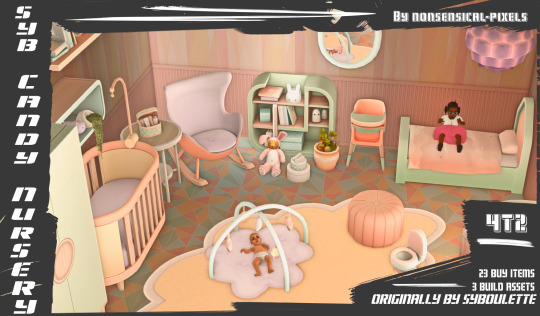
SYBOULETTE'S CANDY NURSERY CONVERTED TO THE SIMS 2 🍭
my previous conversions of syb's nursery sets can be found here: dreamy toddler 👶🏽| little dino 🐱🐉
hi everyone! @syboubou released their candy nursery set some time back in april to celebrate the release of ts4's growing together expansion pack, and i DESPERATELY wanted it for ts2! it's so, so adorable! so i did what i do, and almost two months later... here we are! i'm finally done converting the ENTIRE set! 🥳💃🏽
altogether there are 23 buy items, many of them functional, and 3 build assets: 2 wallpapers, 1 carpet floor. i'm immensely pleased with how it all turned out! it should pair well with my dreamy toddler conversions (linked above) and also my 4t2 conversion of madlen's kei baby care kit!
credits go to @syboubou for the amazing original set! it's simply perfection! 💝
there are two versions in the download below: a merged version, and an unmerged version. yes, the download is just THAT big. please pick only one! a collection file has also been prepared for convenience's sake.
DOWNLOAD: SFS | MF 🧁
keep reading below the cut to read what you need to read! and see what you need to see!
more previews


things to note
a readme.txt is also included in the download!
the changing table does not actually come with a bin. so unless you place the decorative trash bin next to it, your sims will be throwing their trash into the void.
the crib is unanimated. i tried my best but the mapping and the way the model was made simply would not accomodate any animations without looking even worse 😫
the dresser is just decor. i use the gussy up mod in my game so my sims rarely use wardrobes. plus, the original dresser's structure made it impossible to be animated 😅
the way that the playmat works in the previews above is actually as a rug. i made an invisible recolor of the sims 2 store playmat (included in the download) and layered it over the decorative one so that it's 'functional'! if you just want the playmat as a rug, you can delete this.
the toddler bed is cloned from @themediocresulk's toddler beds as pet beds so that it's less buggy and your toddlers can get in or out whenever you want them to! you may want to grab this mod so that they gain more motives.
items included
taken directly from that readme.txt.
buy mode:
Baby Shoes Box -> 318 polys, $49 Beehive Ceiling Lamp -> 900 polys, $99 Bookcase -> 489 polys, $249 Books -> 84 polys, $49 Cat Plushie -> 840 polys, $39 Changing Table -> 349 polys, $249 Cloud Rug -> 2 polys, $49 Crib -> 1788 polys, $399 Diapers Box -> 772 polys, $9 Dresser -> 76 polys, $699 Hanging Plant -> 506 polys, $19 High Chair -> 1048 polys, $249 Mirror -> 270 polys, $149 Ottoman -> 316 polys, $89 Playmat -> 1584 polys, $249 Potty -> 112 polys, $99 Rabbit Lamp -> 912 polys, $35 Rocking Egg Chair -> 1760 polys, $379 Shelves -> 168 polys, $89 Toddler Bed -> 1855 polys, $349 Toy Rattle -> 432 polys, $49 Trash Bin -> 222 polys, $39 Vanity Case -> 1436 polys, $29
build mode:
Floor Carpet -> 26 swatches, $1 Wallpaper Panelling Paint -> 56 swatches, $1 Wallpaper Panelling Pattern -> 32 swatches, $1
misc:
a recolor of the sims 2 store's baby dangle monster playmat is also included. if you want to use it, you'll need the original mesh from the store download.

phew, that was a LONG, but satisfying, post to write! i hope everyone enjoys these conversions as much as i do! i had a lot of fun making them 💝
have a lovely day simming everyone! don't be afraid to reach out to me if there's any issues with this download. though as always, keep in mind...

cheers ~ 🥂
781 notes
·
View notes
Text
‘The Royal Heart’ Bridgerton Au!Anakin series Masterlist
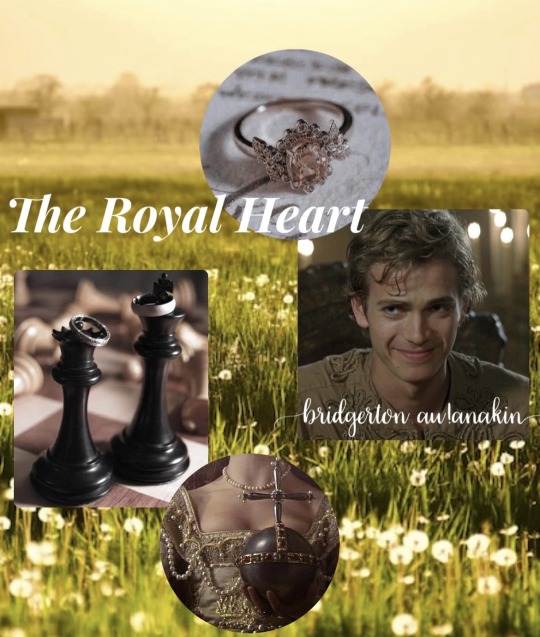
pairing: Bridgerton Au!Anakin Skywalker x Fem!Reader
Summary: reader is the crown princess of Alderaan and it’s almost time for her to be crowned queen. only a problem presents itself, her people question her power because she doesn’t have a husband. when the royal court take it into there own hands to find a royal to marry she is forced to find a way to make it work
a/n: i try to describe very vaguely what reader looks like so anyone can place themselves in her shoes while reading 💋 all photos used are just for aesthetics and general reference. i am 100% not claiming this to be time accurate 😭 im definitely taking creative liberties. also for reference though, i picture this happening around the 1760’s so if anything this is more of a reverse Queen Charlotte bridgerton story au
The royal heart on ao3
The royal Heart on Wattpad
Chapter 1: To Find A King posted: 11/22/23
Chapter 2: From Kingdom To Kingdom posted: 11/23/23
Chapter 3: First Impressions posted: 11/24/23
Chapter 4: The Groom To Be posted: 11/25/23
Chapter 5: A Royal Wedding posted: 11/26/23
Chapter 6: The Truth posted: 11/27/23
Chapter 7: Something New posted: 11/29/23
Chapter 8: Coronation Day posted: 11/29/23
Chapter 9: The Uncovered Tragedy posted: 11/30/23
Chapter 10: In Sickness And In Health posted: 12/3/23
Chapter 11: The Murder Of A Monarch posted: 12/3/23
Chapter 12: A Royal Scandal posted: 12/5/23
Chapter 13: One Thousand Apologies posted: 12/7/23
chapter 14: Distractions posted: 12/13/23
Chapter 15: Meet the Family posted: 12/13/23
Chapter 16: Great Big Race posted: 12/13/23
Chapter 17: A Royal Ball posted: 12/13/23
brief PSA posted: 1/8/24
brief PSA 2.0 (corsets!) posted: 2/13/24
Chapter 18: A New Era posted: 2/14/24
….more to come!
#hayden christensen#anakin skywalker#anakin skywalker x reader#anakin x reader#star wars anakin#anakin imagine#rots anakin#atoc anakin#anakin fanfiction#anakin and obi wan#anakin and ahsoka#anakin skywalker fanfiction#anakin skywalker smut#anakin skywalker x reader fluff#anakin smut#anakin x reader fluff#anakin x you#bridgerton au!anakin x reader#bridgerton au!anakin#bridgerton au#bridgerton#queenie’s thoughts xx<3
220 notes
·
View notes
Text
INTERVIEWER
Clearly there's a deep connection between your understanding of the Holocaust and your theory of interpretation. Could you talk a bit about that?
STEINER
The key issue here is the sense of what cannot be analyzed or explained. A major act of interpretation gets nearer and nearer to the heart of the work, and it never comes too near. The exciting distance of a great interpretation is the failure, the distance, where it is helpless. But its helplessness is dynamic, is itself suggestive, eloquent and articulate. The best acts of reading are acts of incompletion, acts of fragmentary insight, of that which refuses paraphrase, metaphrase; which finally say, “The most interesting in all this I haven't been able to touch on.” But which makes that inability not a humiliating defeat or a piece of mysticism but a kind of joyous invitation to reread.
Now, I'm still staying in the aesthetic, but I'll come on to your question about the connection with the Holocaust, and I hope it will be clearer then. There was once a little boy, Paul Klee, and he used to be marched out of Bern, where he was brought up, on school picnics, the most boring of possible Swiss occasions. One day his class was brought in front of a Roman aqueduct, and the teacher was explaining how much water it carried, how it was built. Klee was eleven years old, and he always had his sketch pad with him. He sketched the aqueduct and put shoes on the pillars. All aqueducts have walked since that day; you can't see an aqueduct that isn't walking. Picasso is going down a street. He sees a child's tricycle. A billion people have seen children's tricycles on the streets. Picasso flips it with his hand, making the saddle the face of the bull and the handlebars the two horns. No one else had ever done that, and since then all tricycles charge at you with their horns. No one has ever explained this, nor has anyone explained what Lévi-Strauss calls the supreme mystery of all human knowledge: “the invention of melody.” This is one of the sentences most important to me. I delight in the sense of the inadequacy of one's passionate attempts to get nearer. This is the wonder of it. Mountaineers tell you of the postcoital sadness when they're at the top of a previously unclimbed peak, but we never get to the top of the ontology of the aesthetic or the question of the meaning of meaning or the question of the origin of language.
Ours is one of the blackest centuries in terms of death, in terms of torture, massacre. I read with genuine respect the economists who tell us that communism or fascism can be analyzed by a good theory of economics or industrialism; or the sociologists who speak of class conflicts, the sociological structure of the city at that time, and so on. The historians all have ideas too. Like all of us I try to keep up with the people who say, “I can explain it to you.” It doesn't work for me. There may be exciting partial insights, for example, in the notion that there are in the death camps aspects of a factory. Fine, that's a brilliant insight. I want to think about it. Maybe it's very illuminating. Or when I'm told that Nazism as distinct from Stalinism is based on lower-middle-class instabilities and resentments, I'm very interested. But these explanations, important as they may be, do not help me grapple with the facts.
The facts are that when Hitler's high command said to him, “Führer, we desperately need the trains for fuel, for armaments; just give us four weeks of not shipping people to the death camps,” he replied that far more important than winning the war was the destruction of all Jews. The notion that he is mad doesn't work for me at all. He was very unmad. Nor does it help me when I know that Stalin destroys a large part of his educated population systematically while planning the greatness of the Soviet Union.
So I work with explanations of a completely different kind. In the Enlightenment, in the early 1760s, Voltaire, after defending a number of people successfully, issues the statement, “One thing is certain: there will not be the use of torture again in civilized Europe.” A few years later, Thomas Jefferson, one of the shrewdest, toughest minds ever, says that he can promise — he actually uses the word promise — that there will never be any return to the burning of books. I have an anthology of statements like that. Not by naive fools, but by some of the toughest, most ironic minds. There is a Catholic proto-fascist thinker called de Maistre, who sits at the edge laughing his head off and writes a sheer masterpiece called The Evenings of St. Petersburg. He says that as it happens, the twentieth century will be drowned in blood in Europe; that there will be camps for the systematic slaughter of human beings. He works with a quite different theory, that of original sin.
de Maistre says, in effect, “Please explain to me the nature of history.” If we are rational Homo sapiens on the road upward, what are we doing to each other? Why are our wars getting more murderous? Why are famines getting bigger? If, on the other hand, there were some mode of an original dis-grace — very powerful word when you put in the hyphen; disgrace has become such a small word: dis-grace, fall from grace, interruption of some kind of relationship to God — then history is a punishment, and we have stumbled into history essentially to suffer and we will continue so till the end, until we either massacre ourselves with a thermonuclear bomb, or our cities implode, as they now may, or there is famine, or finally there is an AIDS which cannot be checked. The whole doctrine of original sin. How do you operate with such a doctrine? I don't know. I call it a working metaphor.
24 notes
·
View notes
Photo
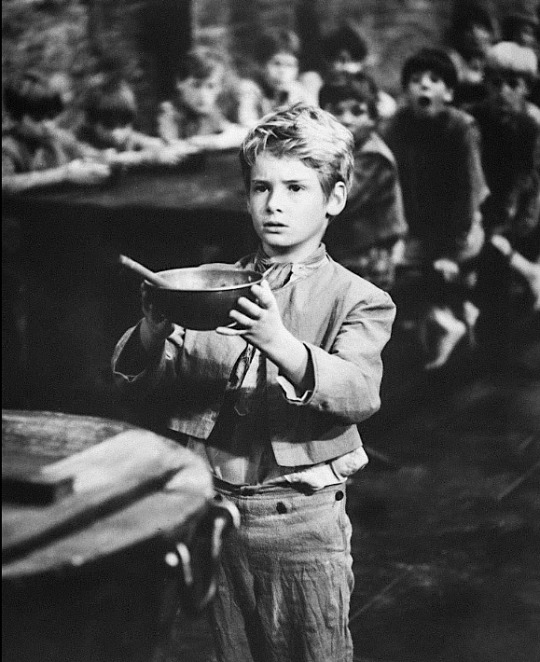
Social Change in the British Industrial Revolution
The British Industrial Revolution (1760-1840) witnessed a great number of technical innovations, such as steam-powered machines, which resulted in new working practices, which in turn brought many social changes. More women and children worked than ever before, for the first time more people lived in towns and cities than in the countryside, people married younger and had more children, and people's diet improved. The workforce become much less skilled than previously, and many workplaces became unhealthy and dangerous. Cities suffered from pollution, poor sanitation, and crime. The urban middle class expanded, but there was still a wide and unbridgeable gap between the poor, the majority of whom were now unskilled labourers, and the rich, who were no longer measured by the land they owned but by their capital and possessions.
Urbanisation
The population of Britain rose dramatically in the 18th century, so much so that a nationwide census was conducted for the first time in 1801. The census was repeated every decade thereafter and showed interesting results. Between 1750 and 1851, Britain's population rose from 6 million to 21 million. London's population grew from 959,000 in 1801 to 3,254,000 in 1871. The population of Manchester in 1801 was 75,000 but 351,000 in 1871. Other cities witnessed similar growth. The 1851 census revealed that, for the first time, more people were living in towns and cities than in the countryside.
More young people meeting each other in a more confined urban setting meant marriages happened earlier, and the birth rate went up compared to societies in rural areas (which did rise, too, but to a lesser degree). For example, "In urban Lancashire in 1800, 40 per cent of 17-30-year-olds were married, compared to 19 per cent in rural Lancashire. In rural Britain, the average age of marriage was 27, in most industrial areas 24, and in mining areas about 20" (Shelley, 98).
Urbanisation did not mean there was no community spirit in towns and cities. Very often people living in the same street pulled together in a time of crisis. Communities around mines and textile mills were particularly close-knit with everyone being involved in the same profession and with a community spirit and pride fostered by such activities as a colliery or mill band. Workers also got together to form clubs to save up for an annual outing, usually to the seaside.
Life became cramped in the cities that had grown up around factories and coalfields. Many families were obliged to share the same cheaply-built home. "In Liverpool in the 1840s, 40,000 people were living in cellars, with an average of six people per cellar" (Armstrong, 188). Pollution became a serious problem in many places. Poor sanitation – few streets had running water or drains, and non-flushing toilets were often shared between households – led to the spread of diseases. In 1837, 1839, and 1847, there were typhus epidemics. In 1831 and 1849, there were cholera epidemics. Life expectancy rose because of better diet and new vaccinations, but infant mortality could be high in some periods, sometimes over 50% for the under-fives. Not until the 1848 Public Health Act did governments even begin to assume responsibility for improving sanitation, and even then local health boards were slow to form in reality. Another effect of urbanisation was the rise in petty crime. Criminals were now more confident of escaping detection in the ever-increasing anonymity of life in the cities.
Cities became concentrations of the poor, surviving off the charity of those more fortunate. Children roamed the streets begging. Children without homes or a job, if they were boys, were often trained to become a Shoe Black, that is someone who shined shoes in the street. These paupers were given this opportunity by charitable organisations so that they would not have to go to the infamous workhouse. The workhouse was brought into existence in 1834 with the Poor Law Amendment Act. The workhouse was deliberately intended to be such an awful place that it did little more than keep its male, female, and child inhabitants alive, in the belief that any more charity than that would simply encourage the poor not to bother looking for paid work. The workhouse involved what its name suggests – work, but it was tedious work indeed, typically unpleasant and repetitive tasks like crushing bones to make glue or cleaning the workhouse itself. Despite all the problems, urbanisation continued so that by 1880 only 20% of Britain's population lived in rural areas.
Continue reading...
35 notes
·
View notes
Text
Patreon story: Rys/MC & Coffeeshop
For Patreon subscribers £11+, a story about Rys taking the MC somewhere special!
Check out what else is happening on Patreon in March here and find all the bonus stories here - see the current list below:
Interactive stories
Silk Handkerchief (Asher Garnett POV: a terrible afternoon tea)
Grey Jacket (Javi del Quiros: readying to leave Zaledo)
Tizari Square (Auguste Renaldt, MC POV: a visit to Jezhan, friendship or romance)
Shiny Shoes (Hartmann, MC POV: stress at Gessner, friendship or romance)
Background POV stories
Tomi Danelak, 1755: meeting Pascha for the first time
Fiore Roldan, 1752: a holiday with Jaime gone wrong
Matia Frasada, 1748: an ill-fated expedition
Varenn Korzha, 1754: an unwanted letter
Raffi Claudian, 1759: meeting exciting new friends
Savarel Lopes, 1760: a bad time on leave
Story Prompts (MC POV)
Beaumont/MC & Waking Up Together
Fiore/MC/Savarel & Too Hot
Hartmann/MC & Cooking
Raffi/MC & Stargazing
Rys/MC & Coffee Shop
Other stories
Florin Kraemer, 1757 - Wartime AU: a new arrival in the trenches
Cezara Dalca, 1754 - Gallatin teacher triad story (F/M/M, first-time, explicit)
13 notes
·
View notes
Photo

Shoes. 1760–75. Credit line: Brooklyn Museum Costume Collection at The Metropolitan Museum of Art, Gift of the Brooklyn Museum, 2009; Gift of Mrs. Clarence R. Hyde, 1928 https://www.metmuseum.org/art/collection/search/168371
#aesthetic#art#abstract art#art museum#art history#The Metropolitan Museum of Art#museum#museum photography#museum aesthetic#dark academia
15 notes
·
View notes
Text

1760s women's pattens with raised arch + iron ring in shoes: fashion + fantasy - colin mcdowell (1989)
69 notes
·
View notes
Text
Carved wooden doll with glass eyes, gesso and painting, wearing silk, cotton, lace, and leather clothing, c. 1760

Wooden doll overpainted with gesso and paint, inset glass lozenge eyes, hand-painted features. Brown human hair wig. Jointed at elbows, hips and knees, with arms attached to torso with flexible fabric at shoulder. Wearing a white glazed cotton sack trimmed with blue silk ribbon bows at elbow, lace and cotton elbow ruffles, and pleated bands of the printed cotton down the front facings of the robe. Design of trailing tendrils with pink and blue flowerets and olive-brown leaves. Blue silk corset with matching blue silk stomacher attached to front of bodice. Pocket made from same printed cotton. Rich green ruched silk petticoat beneath, then white cotton petticoat and long white cotton/linen chemise. White knitted stockings with cream silk ribbon garters, green brocaded silk shoes with leather soles trimmed with white. Cream silk gauze cap trimmed with pink ruched silk ribbon, lined in silk.
26 notes
·
View notes
Text
I’m so happy I could cry! I have been working on these for over a week, but I finally did my first CAS age conversion of Acanthus Sims 1760s shoes from Child to Young Adult, Adult and Elder sims.
I’m planning on doing a series of recolours of Acanthus Sims content for my game which I will share when I am done.


I have wanted these type of rococo shoes for adult sims for ages. Now I just hope they look ok in game 🌺🌸
17 notes
·
View notes